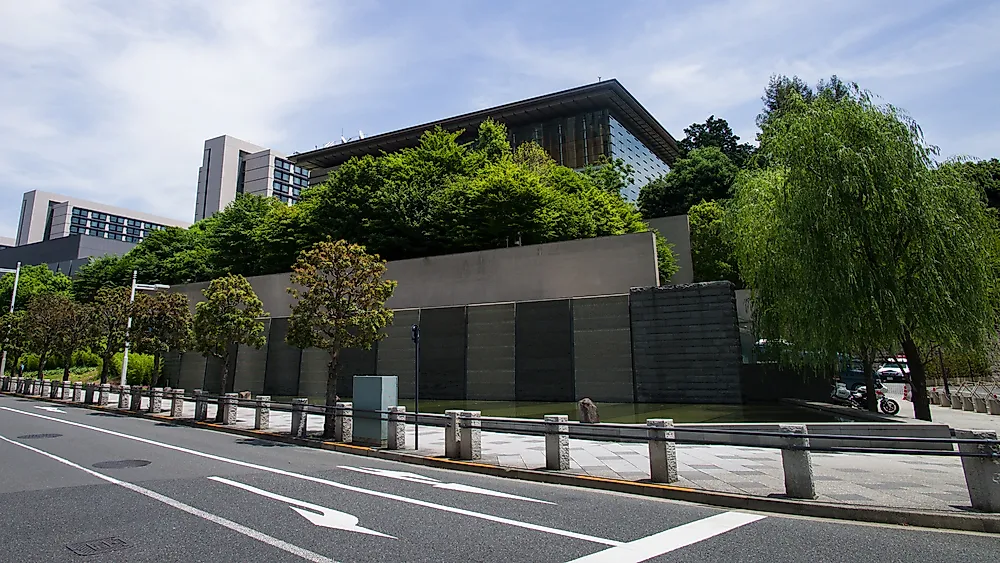Where Does The Prime Minister Of Japan Live?

The Prime Minister of Japan is the nation's head of government and commander-in-chief. The Prime Minister is nominated by the National Diet, which is the bicameral legislature, and then appointed by the Emperor of Japan. Once appointed, the Prime Minister selects a cabinet and chairs all cabinet meetings. In most cases, the nominated Prime Minister is the leader of the majority party in the House of Representatives. Japanese law states that a candidate must be a member of either the House of Representatives or House of Councillors, be at least 25 years of age, be a native citizen of Japan, and must be a civilian, although former members of the military can become candidates. Additionally, the Constitution of Japan defines the functions, responsibilities, powers, and limits of the Prime Minister.
Official Residence of the Prime Minister of Japan
The Prime Minister of Japan lives and primarily works in the Prime Minister's Official Residence, which is also referred to as Sōri Daijin Kantei, Shushō Kantei, or Kantei. The residence is located in Tokyo, which is the nation's capital, only meters from the National Diet Building. Officially opened and occupied in April 2002, it replaced the former residence that was built in 1929. The Prime Minister's Official Residence also serves as the offices of the Cabinet Secretary and Deputy Secretaries and hosts all cabinet meetings, foreign state visitors, and the national crisis management center.
History
Following the Meiji Restoration in 1868, Japan established its national parliament and the position of Prime Minister. As a result, there was a need to build an official office and residence for the Prime Minister. The first residence was completed in 1929. In the early 1990s, the construction of a larger and more modern residence was proposed, and by 2002 a new five-story office and residence were built adjacent to the old building. The structure was designed to minimize its environmental impact and featured a rainwater storage system and solar panels. In April 2015, a drone carrying radioactive material was discovered on the roof of the Prime Minister's Official Residence, which prompted a police investigation. It was later discovered that the drone contained sand from the Fukushima Daiichi nuclear facility, and had been flown to the residence by anti-nuclear protestor Yasuo Yamamoto.
Former Official Residence
The former official residence of the Prime Minister of Japan was completed in 1929, and its design incorporated both expressionist and art deco architecture that was popular during the Taishō period (1912-1926) and Shōwa period (1926-1989) of the country's history. After the construction of the modern building, the government renovated the old residence and converted it to the Prime Minister's official Residential Quarters.











